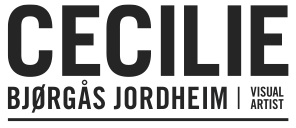Besides my own work I want to use this blog to present shows and works I've a particular interest in. It might be something close to what I do myself or something quite opposite.

I visited this show "APPARATUS" at Lydgalleriet in Bergen, Norway a couple of weeks ago, curated by Carsten Seiffarth. The main piece is Martin Riches and Erwin Stache's "Talking Machine" (1990) which produces human speech. The audience uses a computer to write down sentences for the machine to pronounce. 32 organ pipes shaped in the correct resonating shape of a human voice is being played. The machine triggers the air system signals that opens up the organ pipes syllable by syllable (or sound by sound).
As the organ pipes are all tuned in the same tone height, every word is pronounced in a monotone way without any intonation. However, the machine holds a vocabulary of three hundred English words and it can also count to 100 in English, Danish, German and Japanese.
The shape of the organ pipes makes me think about Rudolph Pfenninger's try-out for a hand drawn human voice and his shapes on optical sound on analogue film in Munich 1932. Pfenninger's sounds are photographed paper with sound-curves drawn on them to represent each note of the soundtrack graphically. In that way one can use this on the optical sound track and have a human voice.

4.014
The gramophone record, the musical idea, the written notes, the sound
waves, all stand in the same internal representational relationship to one another that obtains between language and the world.
—Ludwig Wittgenstein, Tractatus logico-philosophicus (1921)

I visited this show "APPARATUS" at Lydgalleriet in Bergen, Norway a couple of weeks ago, curated by Carsten Seiffarth. The main piece is Martin Riches and Erwin Stache's "Talking Machine" (1990) which produces human speech. The audience uses a computer to write down sentences for the machine to pronounce. 32 organ pipes shaped in the correct resonating shape of a human voice is being played. The machine triggers the air system signals that opens up the organ pipes syllable by syllable (or sound by sound).
As the organ pipes are all tuned in the same tone height, every word is pronounced in a monotone way without any intonation. However, the machine holds a vocabulary of three hundred English words and it can also count to 100 in English, Danish, German and Japanese.
The shape of the organ pipes makes me think about Rudolph Pfenninger's try-out for a hand drawn human voice and his shapes on optical sound on analogue film in Munich 1932. Pfenninger's sounds are photographed paper with sound-curves drawn on them to represent each note of the soundtrack graphically. In that way one can use this on the optical sound track and have a human voice.

4.014
The gramophone record, the musical idea, the written notes, the sound
waves, all stand in the same internal representational relationship to one another that obtains between language and the world.
—Ludwig Wittgenstein, Tractatus logico-philosophicus (1921)
